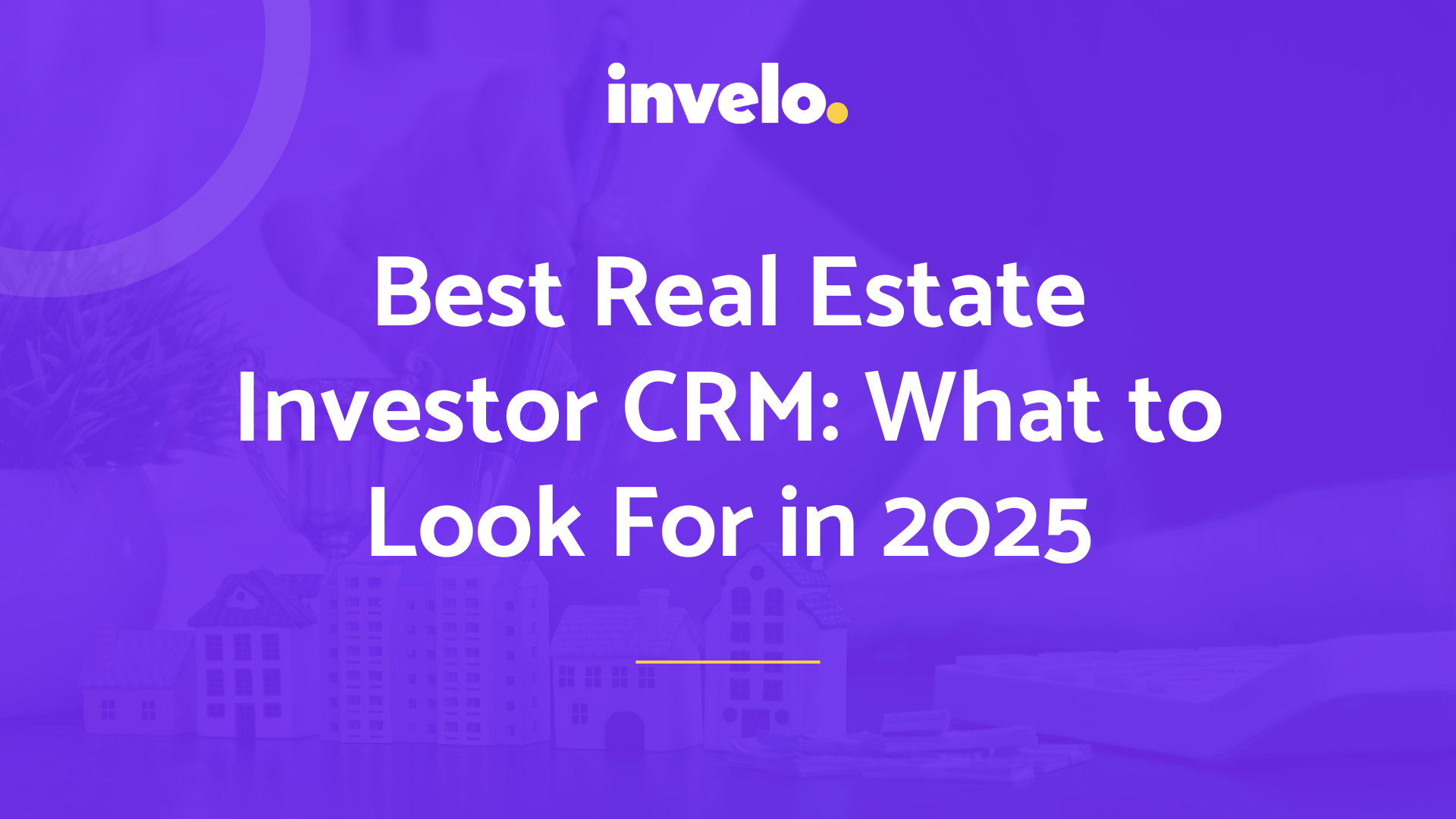Finding motivated sellers, keeping buyers engaged, and closing deals quickly—it’s what every real estate investor is after. But without the right systems in place, deals slip through the cracks. That’s why having the best real estate investor CRM isn’t a luxury—it’s the backbone of a successful investing business.
For wholesalers, a CRM can mean the difference between tracking contracts in messy spreadsheets and managing a predictable pipeline of assignment fees. For rehabbers, it can mean knowing exactly where each property stands in the acquisition-renovation-resale process. And for real estate investors of all types, the best CRM creates efficiency, consistency, and scalability.
Here’s what sets the best real estate investor CRMs apart:
1. Tailored for Real Estate, Not Generic Sales
Most CRMs are originally built for B2B sales teams—tracking prospects, logging calls, and closing contracts. Real estate investors, however, work in a completely different environment. You’re not selling software licenses or managing a sales territory—you’re juggling motivated sellers, cash buyers, property details, contractors, and financing partners, often all at the same time.
That’s why a real estate investor CRM needs to go beyond simply storing names and numbers. It should connect people with properties, contracts, and timelines in a way that mirrors the way investors actually work. The best systems are designed with the messy, fast-moving world of real estate in mind—so when you’re chasing down a preforeclosure lead or managing multiple rehabs at once, you have complete clarity on where each deal stands.
2. Lead Management That Handles Sellers and Buyers
For investors, lead management isn’t just about collecting phone numbers. It’s about balancing two very different sides of the business. On one hand, wholesalers need to stay in front of motivated sellers while also building relationships with cash buyers. On the other, rehabbers need to manage sellers, buyers, contractors, and even lenders—all while keeping projects moving on schedule.
A good CRM brings structure to that chaos. It helps investors see every relationship in context—what stage the deal is at, what conversations have happened, and what needs to happen next. That kind of visibility makes it easier to follow up quickly, negotiate confidently, and avoid losing opportunities simply because someone slipped through the cracks. In a business where timing often makes the difference between a five-figure profit and a missed deal, strong lead management isn’t optional—it’s essential.
3. Automated Follow-Up That Closes More Deals
Most real estate investors don’t lose deals because they didn’t find leads—they lose them because they didn’t follow up enough. The best CRMs automate consistent outreach across text, email, direct mail, and phone so every motivated seller and buyer hears from you at the right time.
4. Pipeline Visibility That Keeps You Focused
The best CRMs give investors a deal pipeline that shows exactly where things stand: new lead, under contract, rehab in progress, assignment pending, closed. This level of clarity helps wholesalers know which contracts need buyers and helps rehabbers track which properties are ready for the market.
5. Simplicity + Automation
A real estate CRM should save you time, not bury you in complexity. The best platforms automate tasks like lead nurturing, follow-up reminders, and campaign launches, while staying intuitive enough for daily use.
6. Data and Insights That Protect Your Margins
In real estate investing, profit margins can be razor thin—especially in wholesaling and rehabbing. One wrong move, like spending too much on bad data or chasing the wrong type of leads, can wipe out a deal’s profitability. That’s why the best CRMs aren’t just about storing information; they’re about interpreting it.
With the right insights, you can see which marketing lists are converting, which campaigns are bringing in motivated sellers, and which follow-up sequences actually lead to contracts. Instead of guessing, you’re making decisions based on real numbers. For investors, that’s the difference between scaling confidently and throwing money into the wind. Data-backed clarity helps you double down on what’s working and cut off what isn’t—protecting your margins and maximizing your returns.

